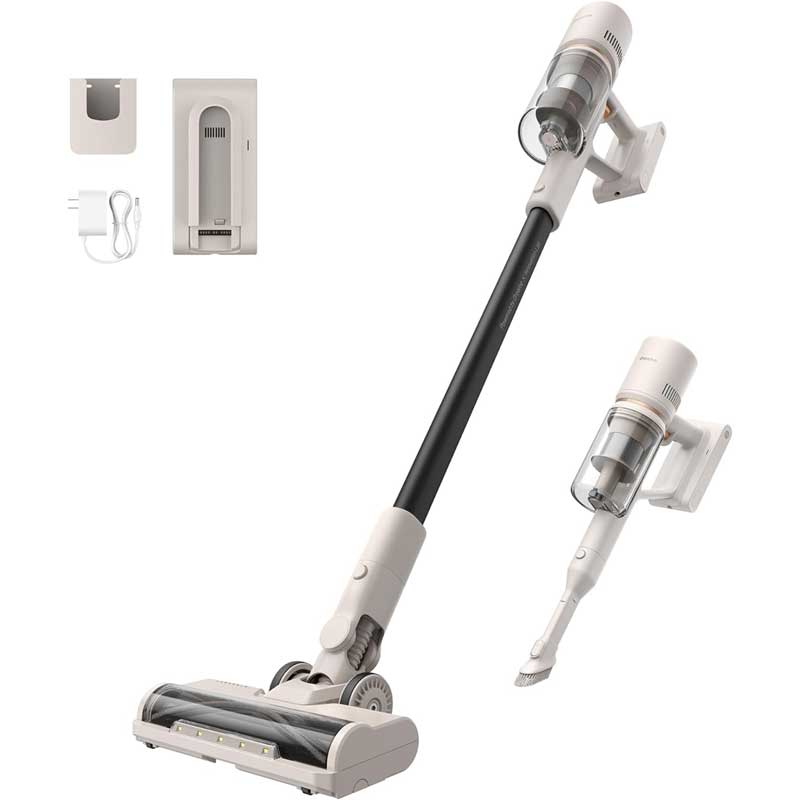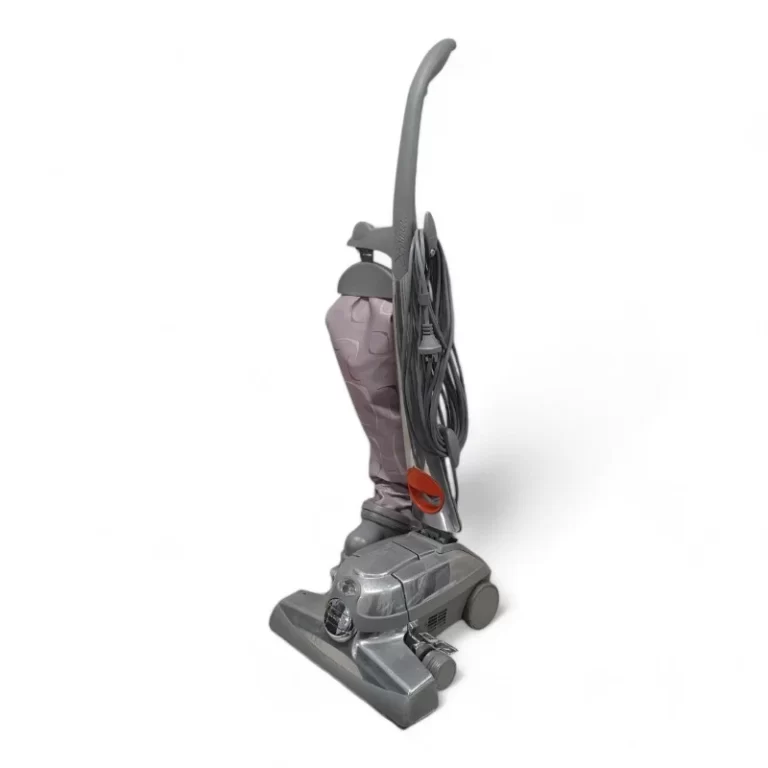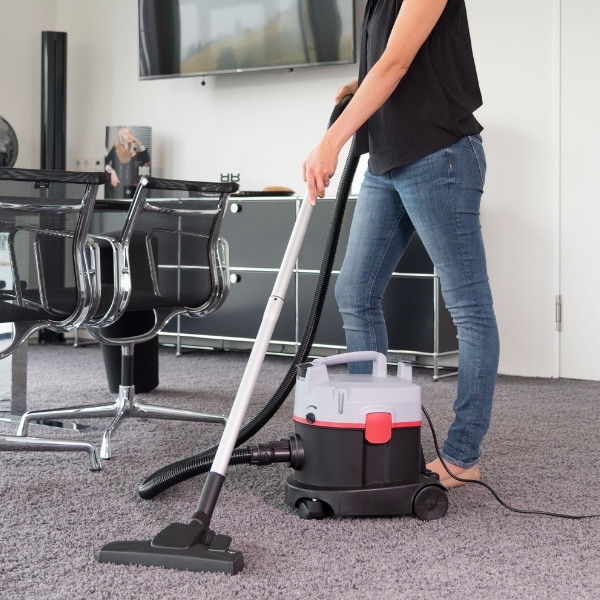Introduction to PA Ratings
What is pa in vacuum cleaner? When shopping for a vacuum cleaner, you might come across ‘PA’ ratings. PA stands for ‘Pascal Airflow’. This measurement tells how much suction power a vacuum has. A higher PA rating means more power to pick up dirt and debris. It’s a key spec to look for.

Knowing what is PA in vacuum cleaner helps you compare models. The PA rating links suction strength to performance. It gauges how well a vacuum can clean. A good PA rating often means a cleaner can handle various surfaces and more dirt. It is vital for high-performance cleaning.
Consumers now demand strong suction in vacuum cleaners. A high PA rating ensures your vacuum cleaner is up to the task. It should clean efficiently, not leaving any residue behind. Look for this rating when choosing your next vacuum to ensure you get a device that meets your cleaning needs.
Importance of Suction Power in Vacuum Cleaners
Suction power in vacuum cleaners is crucial. It defines how effectively a cleaner picks up dirt. Strong suction ensures deep cleaning. It removes not just surface dust but also embedded debris. Strong suction is a must-have for homes with pets or high foot traffic. It tackles pet hair and dirt tracked in by shoes effortlessly.
A vacuum with low suction struggles with heavy soiling and larger particles. This can lead to more frequent cleaning sessions and reduced efficiency. So, when considering what is PA in vacuum cleaner, remember it measures this vital suction strength.
High suction power also relates to better air quality. A strong vacuum can remove allergens and fine dust from your home. This is important for those with allergies or respiratory issues. Plus, a good suction means your cleaning is more thorough on the first pass. It saves time and energy.
In sum, the PA rating is not just a number. It’s a promise of clean floors and healthier living spaces. It assures that your vacuum cleaner will perform up to your standards. Make sure the PA rating of your vacuum matches your cleaning needs.
How PA Ratings Affect Vacuum Cleaner Performance
When evaluating vacuum cleaners, PA ratings are vital. They measure the machine’s ability to perform. A higher PA rating indicates that a vacuum cleaner has more suction power. This power helps to remove dirt and fine particles efficiently.
Increased suction with a high PA rating leads to better cleaning. The vacuum applies powerful force to pull in debris from carpets and floors. This makes it easy to pick up dust, pet hair, and crumbs in one go.
Also, vacuums with high PA ratings require fewer passes over the same spot. This saves time and makes cleaning less of a chore. Additionally, those with higher ratings are often better at cleaning up larger messes. They can handle big spills without losing suction.
A vacuum’s PA rating directly impacts how well it cleans different types of surfaces. High PA models clean carpets, hardwood, and tile effectively. They adapt to various textures and pile heights with ease.
Lastly, a higher PA means less effort for you. The vacuum does the hard work. It lifts stubborn stains and embedded dirt, leaving a cleaner environment. To sum up, a vacuum’s PA rating is a clear indicator of its cleaning prowess.

Comparing PA Ratings Across Various Vacuum Cleaner Models
When you’re face-to-face with a sea of vacuum cleaner options, PA ratings serve as your compass. Different models boast varying PA levels, which can influence your decision. Let’s dive into how these ratings vary and what that means for you.
- Handheld Vacuums: Often smaller and less powerful, handheld vacuums have lower PA ratings. However, they’re designed for quick cleanups and small tasks.
- Upright Vacuums: These models are common in households and typically have higher PA ratings. They’re built for more extensive cleanups and can handle larger debris.
- Robot Vacuums: While convenient, robot vacuums may have a range of PA ratings. Some are surprisingly powerful, while others might struggle with deep cleaning.
- Canister Vacuums: Known for versatility, canister vacuums often have good PA ratings. This makes them suitable for various floor types and messes.
- Stick Vacuums: Stick models can be a mixed bag. Newer ones might pack high PA comparable to uprights, whereas older versions might fall short.
These ratings are crucial when comparing vacuums. A model with a high PA rating is typically more efficient at cleaning. Keep in mind, some vacuum cleaners with extra features might compensate for slightly lower PA. For instance, a vacuum with specialized brushes can improve cleaning effectiveness, even with lower suction.
While assessing different models, remember that the highest PA isn’t always necessary. Match the PA rating with your specific cleaning needs. If you’re dealing with lots of pet hair or deep carpets, aim high. For lighter tasks, a moderate PA might suffice.
In conclusion, comparing PA ratings helps you gauge a vacuum cleaner’s power. Look for a balance between PA and other features to find your ideal cleaning partner.

Factors to Consider in Addition to PA Rating When Choosing a Vacuum Cleaner
While a high PA rating showcases a vacuum cleaner’s suction power, other factors are pivotal too. Here’s what else to keep in mind:
- Filter Quality: A good filter is crucial for trapping dust and allergens. Ensure your vacuum has a high-quality filter system.
- Vacuum Cleaner Type: Handheld, upright, robot, canister, or stick each suit different needs. Choose a type that aligns with your cleaning habits.
- Bagged vs. Bagless: Bagged vacuums often have better filtration but require bag changes. Bagless vacuums are more convenient but may need frequent filter cleaning.
- Noise Level: Consider how much noise you can tolerate. Some powerful vacuums can be loud, which may be a concern in certain households.
- Corded vs. Cordless: Cordless vacuums offer freedom of movement. Corded ones typically have steady suction but limit mobility.
- Battery Life (for cordless models): If you go cordless, check the battery life. Longer battery life means uninterrupted cleaning sessions.
- Attachments and Accessories: Look for tools that match your cleaning needs. Crevice tools, pet hair brushes, and upholstery nozzles enhance cleaning.
- Weight and Maneuverability: A lighter vacuum is easier to carry and maneuver. This is important if you have stairs or need to clean multiple levels.
- Capacity: A larger dustbin or bag will need less frequent emptying. This is handy for cleaning larger areas or heavy-duty messes.
- Warranty and Support: A long warranty and reliable customer support give peace of mind. This ensures help is available when you need it.
Beyond PA, considering these features will help ensure you buy a vacuum cleaner that fits all your cleaning requirements. Match your preferences with the cleaner’s features to get the best cleaning experience.
Understanding the Technical Specifications Linked to PA Ratings
When weighing what is PA in vacuum cleaner, understanding related technical specs is key. PA, or Pascal Airflow, is one of several specs that can guide your choice.
- Motor Wattage: High wattage often means stronger suction. But it can also mean more power consumption.
- Airflow: Measured in liters per second, airflow indicates how much air the vacuum moves. More airflow can mean better cleaning.
- Dust Capacity: The amount of dust a vacuum can hold affects how often you’ll empty it. Higher capacity can save time.
- Sealed Suction: This spec shows suction power with a sealed path. It relates to how much it can pick up.
- Noise Rating: Usually given in decibels, this tells how loud the vacuum is. Lower may be more comfortable for homes.
Each spec can tell you about a vacuum’s power and usability. Don’t just look at PA. Consider how all specs fit your needs. Together, they shape the cleaning power and efficiency of vacuum cleaners. Choose wisely for a model that meets your demands.
Tips for Maintaining Optimal Suction Power Over Time
Maintaining your vacuum cleaner’s suction power ensures it continues to perform well. Here are simple tips to retain optimal PA in your vacuum cleaner:
- Regularly Empty the Dustbin or Change the Bag: A full bin or bag reduces suction. Empty or replace it once it’s about two-thirds full.
- Clean the Filters Often: Washable filters should be cleaned according to the manufacturer’s guidelines. Replace non-washable filters as suggested to avoid blockages.
- Check and Clear Blockages: Inspect the hose and cleaning heads for obstructions. Remove lodged items to maintain airflow.
- Keep Brushes and Rollers Free of Debris: Hair and string can wrap around brushes, reducing effectiveness. Cut them away and clean the brushes regularly.
- Handle with Care: Avoid dropping or banging your vacuum cleaner. Impacts can loosen internal parts, affecting the suction.
- Schedule Professional Servicing: Yearly check-ups by experts can keep the vacuum working at peak performance.
- Store Properly: Keep your vacuum in a dry place away from heat. Proper storage prevents premature wear.
- Use Suitable Attachments: Match the right tools to the right job for efficient cleaning without overstraining the motor.
- Monitor Performance: Watch for changes in performance. Address issues early to prevent major problems.
By following these tips, you protect your vacuum’s suction ability. This ensures your cleaner remains powerful over time. Regular upkeep is key to a lasting, efficient vacuum with good PA.
Conclusion: Making Sense of PA for Your Next Vacuum Cleaner Purchase
As we wrap up, understanding ‘what is PA in vacuum cleaner‘ is critical for smart shopping. PA ratings, or Pascal Airflow, measure a vacuum’s suction power. They are key to finding a cleaner that meets your needs. To choose well, consider PA along with other specs.
A high PA rating points to strong suction. It is crucial for picking up more dirt. It also saves time by cleaning efficiently on the first pass. Match the PA rating to the level of cleaning you need. For heavy-duty tasks, go for a higher PA. For light cleaning, a moderate PA will do.
Remember to also weigh in other factors. Pick based on filter quality, vacuum type, noise level, and more. These details round out the vacuum’s full cleaning capability.
Lastly, keep your vacuum’s PA high over time. Empty the dustbin and clean filters often. Check for blockages and maintain brushes and rollers. Store your vacuum properly and follow the care tips shared above.
With a clear grasp of PA ratings and maintenance, your next vacuum cleaner purchase will be well-informed. You’ll ensure that your cleaning routine becomes more effective and hassle-free. Feel confident knowing you’ve got the right power to keep your space spotless.


